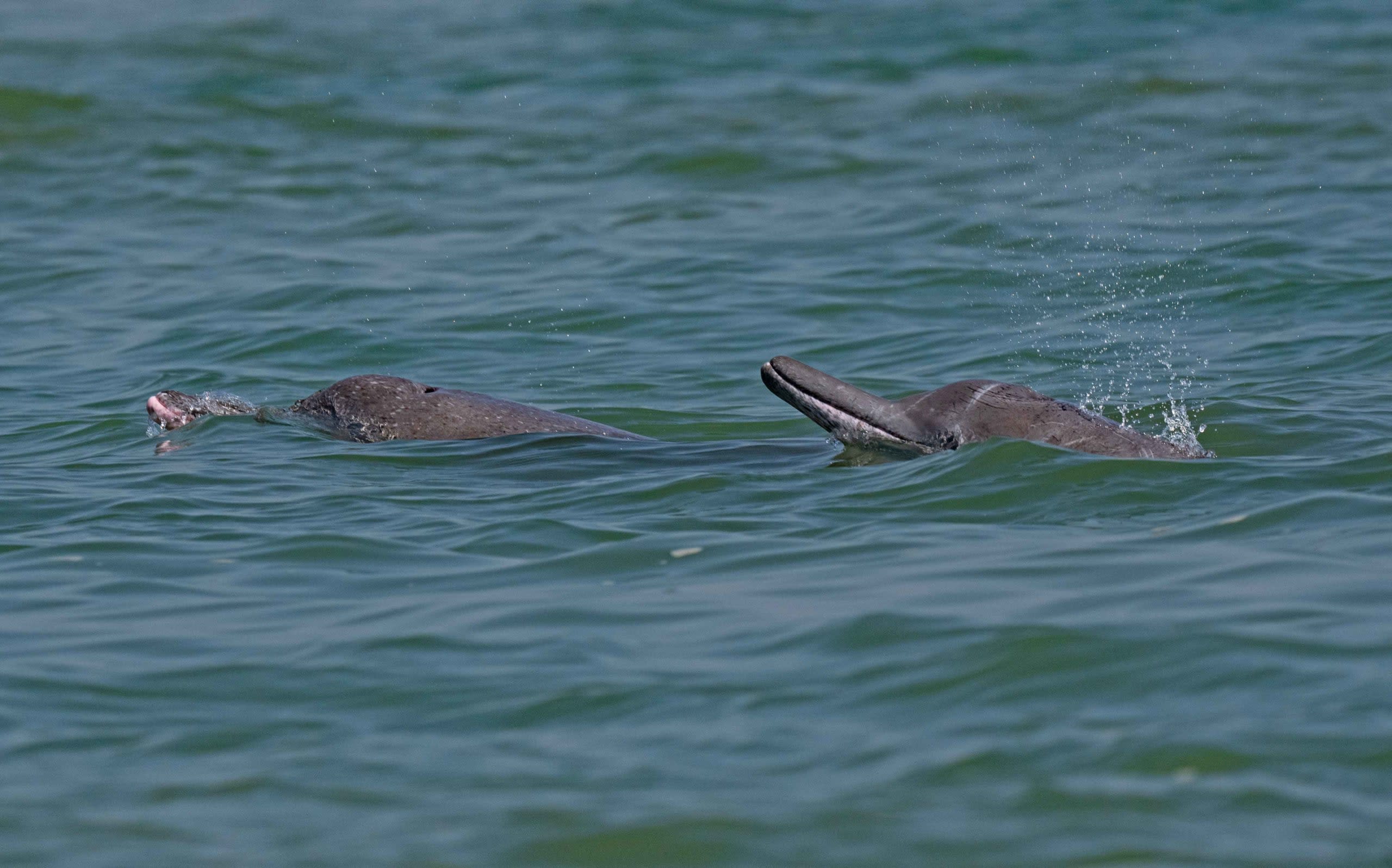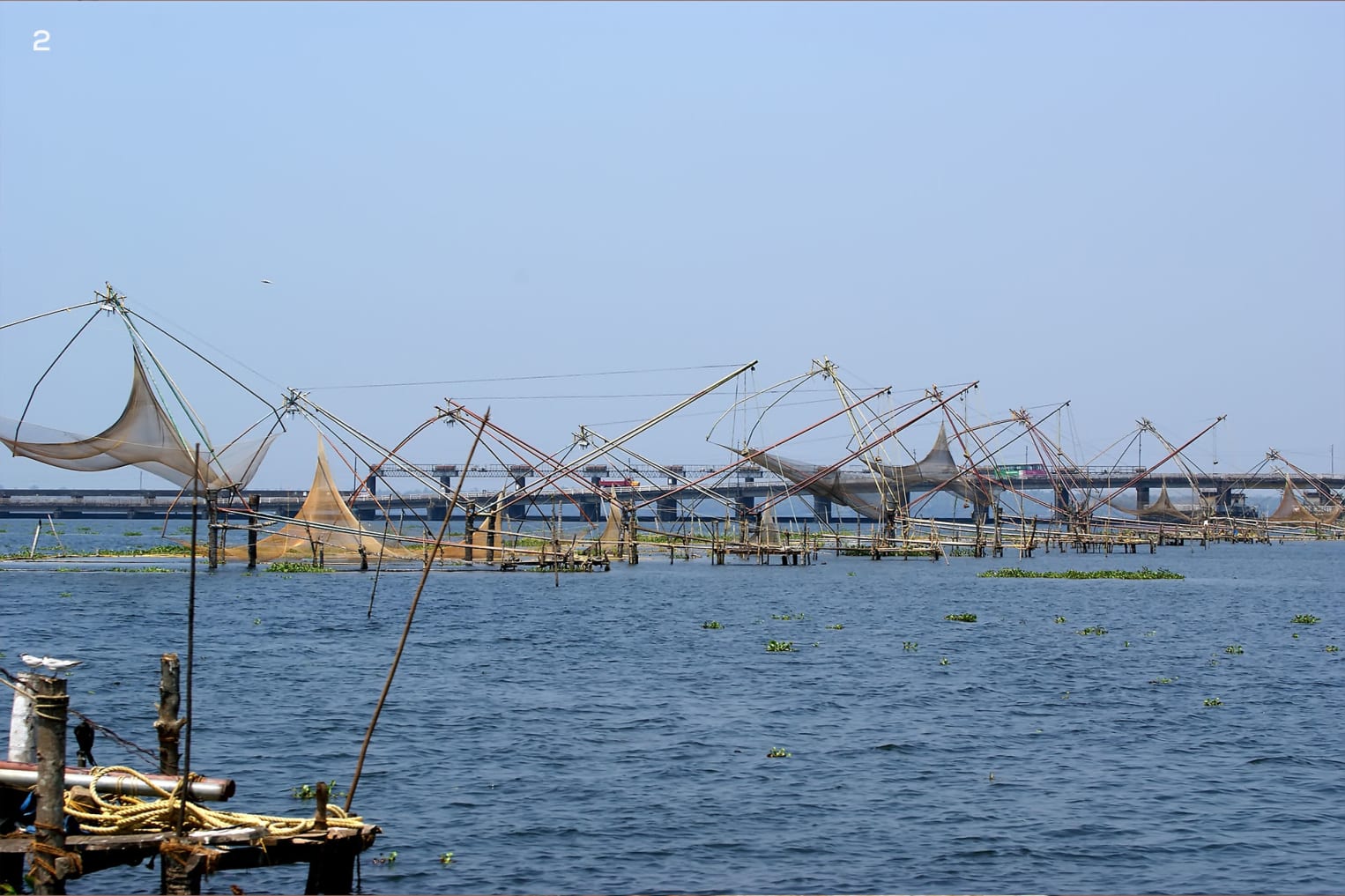 Listen to this article
•
15:34 min
Listen to this article
•
15:34 min
Can two fishers compete and coexist within the same fishing grounds? This is the tale of two fishers in India, human and cetacean, intrinsically and historically intertwined. The country’s vast expanse of marine scapes harbour at least 30 species of marine mammals, ranging from truly colossal whales to dolphins, one species of porpoise, and dugongs.
Most of us may be familiar with the Indian Ocean humpback dolphin from India’s west coast, as it is one of the most frequently sighted species. Being highly social, they usually form groups called pods, typically ranging from 3-10 individuals. They inhabit different habitats, ranging from sand and mud flats to estuaries and the mouths of rivers. Confined wholly to shallow, coastal waters, this species is rarely spotted in waters deeper than 20 metres. This marked habitat restriction brings dolphins in close contact with people across its entire range, spanning near-shore waters from the Cape of Good Hope, South Africa, to the Palk Strait between India and Sri Lanka. Moreover, this dolphin shows a preference for prey like mullet, anchovies, crustaceans, and cephalopods, placing them at loggerheads with the ever-burgeoning fisheries sector that targets the very same species for seafood. On one hand, dolphins are often accidentally ensnared and injured by larger nets. On the other, fishers across the Indian Ocean continually report damage to their nets from dolphins grappling for an easy meal.
As a result, unfortunate encounters with many of these fishers, coupled with human-driven habitat degradation, are often cited as the most pressing challenges to the survival of this species. These dolphins are highly intelligent and display several behaviours that are learned responses to their rapidly changing environments. Other dolphin species, like the Irrawaddy river dolphin at Chilika, Odisha, have learnt that stake netted areas provide a barrier to help catch fish prey. Such resource sharing seen in other species may offer a glimmer of hope against extinction for humpback dolphins. Sharing both their habitat and prey may be the only way forward for the coexistence of humans and dolphins.
Nearly a decade ago, I first heard from a colleague, Dr Divya Panicker, about her research on how this endangered species uses its habitat at the Vembanad backwaters in Kochi, Kerala. This lake (the longest in the country) accommodates two bustling fishing harbours, the country’s first international container transhipment terminal, a liquefied natural gas terminal, and naval, coast guard, and marine police bases. It is also a popular tourist destination on whose shores live at least six lakh people, including several thousand fishers. The Indian Ocean humpback dolphin (Sousa plumbea) tends to be spotted more in and around river mouths and estuaries like Vembanad. While this is possibly because these regions where fresh and marine waters merge harbour a higher diversity of prey, their presence in such high human-use regions provides fodder for scientific probing even to this day.
Dr Panicker spotted these fascinating cetaceans year-round over her study, with a marked increase in the dry season. Higher salinity in these months usually brings with it more fish, likely allowing dolphins to forage with relative ease during this period. These dolphins ranged from solitary individuals to pods of up to eight animals and were often spotted during the first half of the day. They seemed to share space, with assumed ease, with the different small-scale artisanal fishers that operate within the lake. Her work led to several questions, laying the foundations for my own forays into dolphin research. I took it upon myself to venture out onto the Vembanad shore to understand how these dolphins might interact with the many vessels and fisheries that pepper the estuary on any given day.
Standing by the backwaters with binoculars pressed to my face I wanted to record any behaviours these dolphins might employ to survive in this human-dominated seascape. My findings from four months of observations in 2016 also concluded that the dolphins primarily spend their time foraging within this estuary. Work from other parts of the world indicates that fisheries can increase dolphin foraging, particularly when the targets are mullet and prawns, like in Vembanad. The thread of logic here is that where there are fish, there will be fishers, humans or otherwise. Over my observations, I found at least three different pods of humpback dolphins (identified using the unique markings on their dorsal fins) using the estuary regularly. However, the dolphins seemed indifferent to the dip nets, cast nets and the small, non-motorised gill net dinghies within these waters. They showed neither preference nor disinclination for the areas where fishing vessels and gear were concentrated. Fishers, on the other hand, seemed to use dolphin presence as a cue for fishing, potentially increasing their catch. Each time they noticed dolphins nearby displaying signs of foraging (like tail slaps), they would hasten to cast their nets. On the surface, the dolphins seemed unconcerned by the fishing as they would return several times to the same area over the same day. Such dolphin-assisted fisheries are not unique to Vembanad and have been reported a little north at Ashtamudi, too.
With the non-fishing vessels, size seemed to matter a lot to the dolphins. The larger, albeit slower boats, like cruise liners, transhipment and naval vessels, made the dolphins vanish for hours. On the other hand, they seemed unperturbed by the smaller, faster vessels like ferries and outbound, inactive fishing boats. I even had the immense fortune of witnessing some dolphins bow-riding alongside the front of these boats — a behaviour that involves one or more dolphins “riding” the waves formed at the front of an advancing vessel. Speculations about why dolphins do this have proposed two reasons — to travel or play.
Selective evasion of certain boats is likely the key to their long-term persistence in the area. Accidental collisions with any boat or ship are often fatal, although I did not spot any such incidents during my work. These highly astute animals are capable of very nuanced responses to their environments, as evidenced across their global range. My study, part of my master’s thesis at the National Centre for Biological Sciences, left bigger questions in its wake: With persistent vessel traffic, why do the dolphins continue to frequent the Vembanad backwaters? Further, whether the dolphins will continue to live and fish alongside people is something I cannot yet answer. The only way to know would be for us to replicate studies across the country’s coastline, bridging fundamental gaps in information that hamper successful conservation. Only then might people and dolphins survive rapidly changing marine spaces to fish another day.







